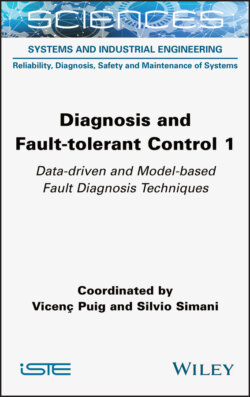Читать книгу Diagnosis and Fault-tolerant Control 1 - Группа авторов - Страница 15
I.5. Model uncertainty and fault detection
ОглавлениеModel-based FDI makes use of mathematical models of the system. However, a perfectly accurate mathematical model of a physical system is not possible. Usually, the parameters of the system may vary with time, and the characteristics of the disturbances and noises are unknown, so they cannot be modeled accurately. Hence, there is always a mismatch between the actual process and its mathematical model, even under no fault conditions. Such discrepancies cause difficulties in FDI applications, in particular, since they act as sources of false alarms and missed alarms. Therefore, the effect of modeling uncertainties, disturbances and noise is the most crucial point in the model-based FDI concept, and the solution to this problem is the key for its practical applicability (Chen and Patton 1999).
To overcome these problems, a model-based FDI scheme has to be insensitive to modeling uncertainty. Sometimes, a reduction of the sensitivity to modeling uncertainty does not solve the problem, because the sensitivity reduction may be associated with a reduction of the sensitivity to faults (Gertler 1998; Chen and Patton 1999). A more meaningful formulation of the FDI problem is to increase the insensitivity to modeling uncertainty in order to provide increasing fault sensitivity.
The difficulties introduced by model uncertainties, disturbances and noises in model-based FDI have been widely considered during the last 10 years by both academia and industry (Gertler 1998). A number of methods have been proposed to tackle this problem, for example, the Unknown Input Observer (UIO), eigenstructure assignment and parity relation methods.
An important task of the model-based FDI scheme is to be able to diagnose incipient faults in a system. With respect to abrupt faults, incipient faults may have a small effect on residuals and can be hidden by disturbances. On the other hand, hard faults can be detected more easily because their effects are usually larger than modeling uncertainties and a simple fixed threshold is usually enough to diagnose their occurrence by residual analysis.
The presence of incipient faults may not necessarily degrade the performance of the plant, however, they may indicate that the component should be replaced before the probability of more serious malfunctions increases. The successful detection and diagnosis of incipient faults can therefore be considered a challenge for the design and evaluation of FDI algorithms.
